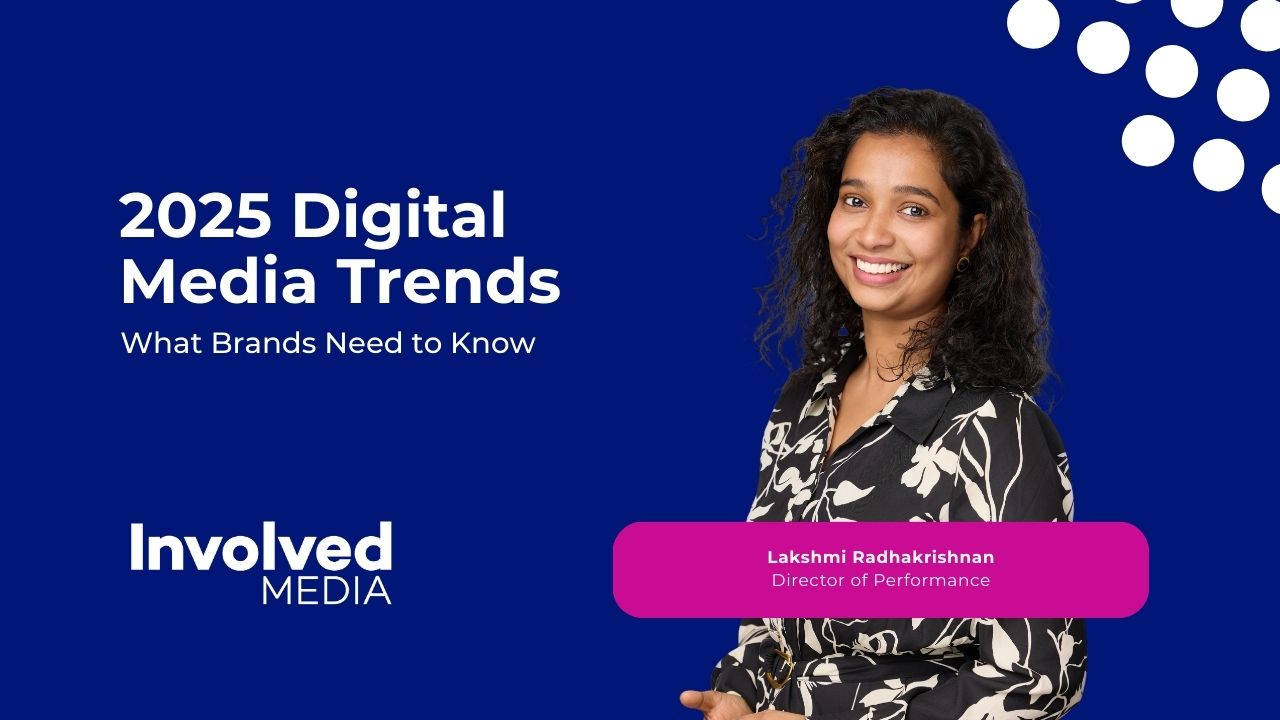2025 is the Year of Digital Acceleration—Adapt or Be Left Behind. AI-driven automation shifts in consumer behavior, changing privacy and government policy regulations are redefining how brands connect with their audience.
Here are my thoughts on the trends shaping digital media in 2025 and what businesses should focus on to stay ahead.
1. Budget Constraints, Media Fragmentation & The Data Challenge
Economic uncertainty has led to cautious marketing budgets, but at the same time, data depreciation and media fragmentation make performance tracking increasingly complex. With 57% of the open web already cookieless and 20% of users regularly deleting cookies, brands must pivot towards first-party data collection. CRM systems, loyalty programs, and zero-party data collection (direct from consumers) will be crucial.
How Brands Can Adapt:
- Media Mix Modeling (MMM) is emerging as a key solution to measure marketing effectiveness without relying on individual user tracking. MMM analyzes aggregated data (across digital, TV, OOH, radio, and more) to provide insights into what’s driving performance and guide budget allocation decisions. Please reach out to me or InvolvedMedia team to learn more on how we are working towards empowering businesses of All sizes with the power of MMM analysis by making it accessible.
- Investing in first-party data strategies will be critical to maintaining personalization and ad relevance in a cookieless world. Consumers are willing to share data when they receive relevant offers, exclusive content, or personalized experiences.
- Brands must shift towards a balanced mix of online and offline strategies to counteract media fragmentation.
2. AI and Automation Reshapes Search
- Paid Search – AI-powered campaigns such as Performance Max, Demand Gen, and predictive audience targeting are revolutionizing search advertising. Google and Microsoft Ads continue to drive automation, reducing manual interventions while optimizing real-time performance.
- Generative Engine Optimization (GEO)– With AI-powered search results gaining traction—with Google AI Overviews, ChatGPT, Perplexity, Copilot, and Gemini—brands must adapt their SEO strategies to align with AI-generated content. According to Gartner, 79% of consumers are expected to use AI-enhanced search in the coming year, with 70% already trusting generative AI-driven results.
- Voice Search – 51% of voice shoppers use it to research products, with 22% buying directly using voice. And 17% use it for reordering items. Strategize Conversational content for your business to unlock power of voice search.
3. The Importance of Diversifying Social Media Investments
With TikTok facing political scrutiny, Meta eliminating fact-checking, and new players like RedNote and Bluesky emerging, brands must diversify their social media investments. Relying too heavily on Meta could pose risks. A balanced portfolio across platforms will help brands mitigate risks, reach different audience segments, and align better with business goals.
4. Rise of Retail Media Networks (RMNs)
Retail media is one of the fastest-growing segments in digital advertising, with major players like Amazon Ads, Walmart Connect, and Home Depot leveraging their first-party data to connect brands with high-intent shoppers. Even non-traditional retailers are launching their own media networks, capitalizing on first-party data. Statista projects retail media ad spend in Canada to rise by 21% in 2025.
5. Social Commerce Is Reshaping Online Shopping
Social media is no longer just for your entertainment—it’s now a full-fledged e-commerce hub. Platforms like TikTok Shop, Instagram Checkout, and Pinterest Shopping are integrating seamless buying experiences, reducing friction in the purchase journey. To succeed, brands must create authentic content, leverage influencers, and optimize shoppable ads to drive conversions.
6. Employee-Generated Content (EGC) Gains Momentum
While user-generated content (UGC) has long been valuable, employee-generated content (EGC) is becoming a trusted marketing tool. Consumers are 3x more likely to engage with content shared by employees than traditional brand communications. This is also turning out to be an effective marketing technique within B2B players as well. Encouraging employees to showcase behind-the-scenes moments, industry insights, and product experiences can enhance credibility and organic reach.
The digital landscape in 2025 will be defined by AI-driven strategies, social commerce, privacy-first marketing, and retail media advancements. Brands that prioritize innovation, transparency, authenticity and consumer-centric experiences will emerge as industry leaders. Its all about how you adapt early while staying honest and true to your audience.
What according to you will be the most significant trend of 2025, let’s discuss!


